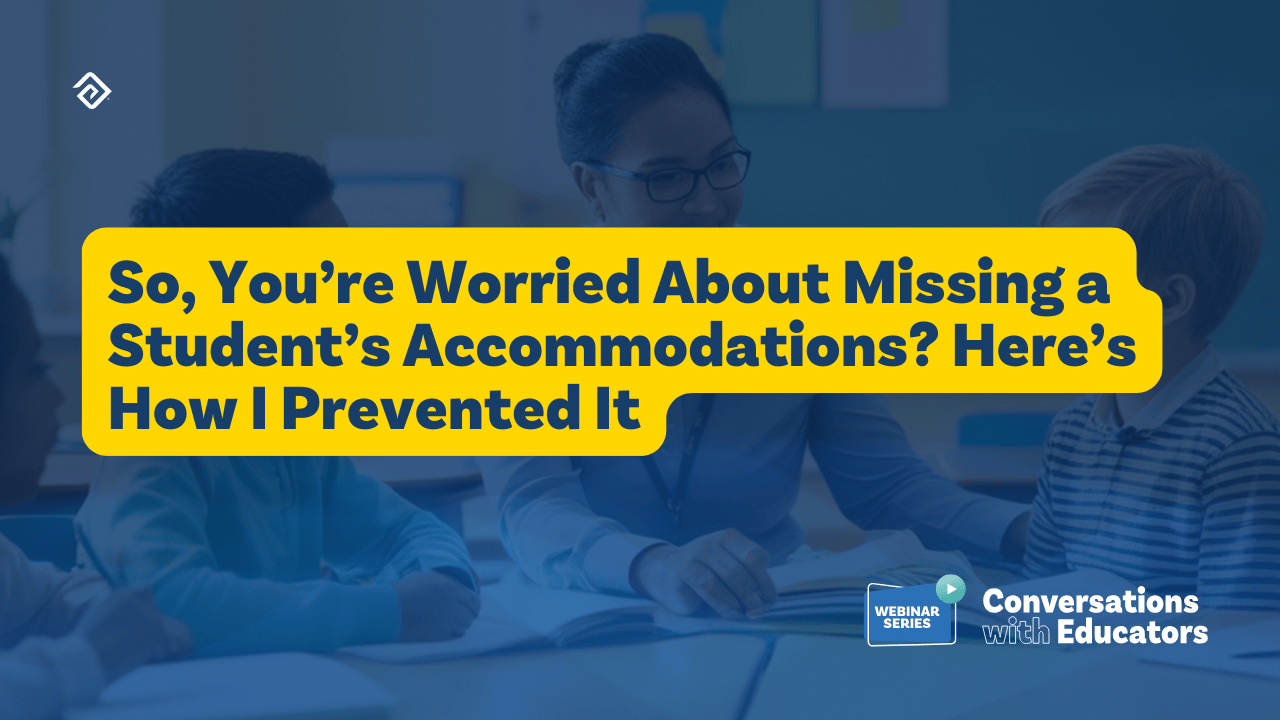How to Support Teachers: Strategies for School Leaders
My wife and I both come from a family of educators. As such we benefited from the mentorship of not just our family but also from some great mentor teachers and administrators. But if I’m being honest, I didn’t stumble on these people, I was set up for success in the classroom through connections and relationships.
When I transitioned from the classroom into an administrative role, I had so many conversations with disillusioned teachers on the verge of burnout, that it made my pathway feel all the more blessed. I knew that supporting teachers would need to be my top priority and that it should be for every school leader.

Teachers play a big role in shaping students’ futures, oftentimes a greater role than even their parents. Yet, many teachers often face serious work-related challenges, such as heavy workloads and limited resources. We should NOT be part of the problem. This pressure can lead to burnout and feeling less passionate about their work. It can also lead to them leaving the profession, which itself can lead to more stress on those left behind. Without proper support, the ability to deliver the quality education that each child deserves suffers.
To create a learning environment that supports teachers and, by extension, the entire school community, it is important for school leaders to empower their teachers. Here are seven ways school leaders can provide meaningful support to teachers.
Why Is Teacher Support Important?
Teachers are the foundation of the education system. When administrators understand this and provide the right support, teachers feel valued. The result is often positive and students do better.
While it is a good practice to offer opportunities for professional development, teacher support goes well beyond that. School administrators, principals, and other school leaders need to find ways to support teachers both professionally and emotionally. This is because teachers now take on more responsibilities than simply delivering instruction in the classroom.
These days, teachers are expected to address their students' socio-emotional learning needs and respond to their socio-economic challenges. Additionally, teachers need to integrate technology into the classroom. All these factors make teaching more demanding than ever.
In addition to professional and emotional support, teachers should also have easy access to practical resources that help them:
- Manage the challenges in the classroom
- Set and achieve educational goals that are relevant to their students
- Create an environment that supports learning
Teachers who receive the support they need are more motivated and satisfied with their jobs. This reduces demoralization and helps keep good teachers in schools.
7 Tips on How to Support Teachers
1. Make It Easy for Teachers to Speak Up
Effective communication is crucial in creating a school environment that supports teachers. When school leaders encourage open and transparent communication, teachers are more likely to feel heard and respected.
To do this, it’s important to create various channels through which teachers can feel comfortable sharing their thoughts, ideas, or concerns. Here are a few ways school leaders can achieve this:
- Genuinely pay attention to what teachers have to say and ask clarifying questions
- Create time for regular classroom visits
- Make time to have informal conversations with teachers
- Give teachers timely updates and feedback
2. Find Ways to Motivate and Value Teachers
One of the most effective ways to support teachers is to make them feel valued. Teachers are more likely to put in their best effort when they feel the work they do makes a difference. However, their motivation can fade if their efforts go unnoticed, leading to frustration and burnout over time.
A good way to keep teachers motivated and make them feel valued is to acknowledge that their work makes a real difference both for students and the entire school community. School leaders should consider these tips:
- Ensure initiatives put students first
- Give teachers the chance to talk about what’s working and what isn’t
- Appreciate teachers through simple gestures such as a handwritten note or a quick conversation expressing gratitude
When school leaders do this, they reinforce the purpose—the “why”—teachers chose to teach in the first place.
3. Let Teachers Choose How They Grow Professionally
Professional development is most effective when it meets the needs of individual teachers. Not all teachers have the same growth needs. Some may need help with classroom management, while others may want to refine their use of technology or explore new teaching methods. This is why a one-size-fits-all approach may not be the best way to support their growth.
When giving teachers a chance to learn, it is important to consider what they believe is relevant to their needs. This way, they have more control over their growth and are more likely to value and apply what they learn in meaningful ways.
4. Involve Teachers in Decisions
Teachers work directly with students every day, which is why their insights and experiences are invaluable when it comes to making decisions about how the school is run. When school leaders involve teachers in these decisions, it results in better policies and makes teachers feel more satisfied with their jobs.
Research shows that teachers experience greater job satisfaction when they have a real say in how the school is run compared to when they are solely focused on being good teachers. While top-down management has its place, school leaders can support teachers by:
- Asking for their thoughts on lesson planning, school rules, and issues that affect the entire school.
- Giving them opportunities to lead committees, task forces, and other projects or programs.
- Making sure that their ideas are taken seriously and included in the decision-making process.
5. Give Teachers the Resources They Need
Teachers can only do their best work when they have the right tools. Without proper resources, even the most dedicated teachers may struggle to create an effective learning environment that helps keep students engaged.
Schools should make sure teachers have access to materials, technology, and support systems that help them succeed in the classroom. Beyond textbooks and school supplies, teachers also need access to up-to-date teaching strategies. When teachers have the right resources, they can focus on helping students learn and grow.
To achieve this, school leaders should:
- Make sure to equip classrooms with all the necessary teaching materials
- Provide ongoing training and development programs
- Offer access to mentorship programs, peer support, and expert guidance
6. Make Work-Life Balance a Priority for Teachers
Teaching is a demanding job, and in many instances, it extends beyond school hours. Teachers often spend a significant amount of time planning lessons, grading, and participating in extracurricular activities. Unfortunately, when work consistently takes over personal time, it can lead to burnout and stress.
One way school leaders can support teachers is by setting realistic expectations. Teachers should not have to deal with too many tasks that leave them with inadequate time to rest and recharge. Simple changes, such as limiting after-hours meetings and offering flexible planning time, can help teachers maintain a healthier balance between their professional and personal lives.
7. Use Evaluation to Support Teacher Growth
Teacher evaluation goes beyond pointing out flaws. When used correctly, periodic evaluations can support teacher development by identifying areas for growth. However, trying to improve several areas of weakness at the same time can overwhelm teachers and even discourage them, as addressing too many things at once can be counterproductive.
A better approach is to identify the one or two most important areas where a teacher could improve. Next, develop a clear and actionable plan to strengthen those skills and move on to address other areas once the teacher makes progress.
During evaluation, teachers should feel supported rather than criticized. When teachers trust that evaluations are meant to help them succeed, they will be more open to feedback and improvement.

Help Teachers Thrive in a Stronger School Community
When school leaders know how to support their teachers, it creates an environment that helps both teachers and students thrive. Regularly checking how teachers are doing in and outside the classroom can help leaders understand where teachers need support. This is where Evaluation, our powerful staff assessment tool, comes in handy. It makes teacher evaluation simple and gives helpful insight that schools can use to support teachers.
If your school is interested in new ways to improve the learning experience for children, you may also be interested in automating tasks and streamlining processes so that your teachers have more time to teach. Education Advanced offers a large suite of tools that may be able to help:
- Evaluation: A solution for documenting every step of the staff evaluation process, including walk-throughs, self-evaluations, supporting evidence, reporting, and performance analytics.
- Pathways: A graduation tracking tool that enables administrators and counselors to create, track, and analyze graduation pathways, ensuring secondary students stay on track to graduate.
- TestHound: Our test accommodation software helps schools coordinate thousands of students across all state and local K-12 assessments while considering various accommodations, such as for reading disabilities, physical disabilities, and translations.

More Great Content
We know you'll love




